
‘LIKE A BOOMERANG hurled across three-plus decades and carrying today’s viewer back with it to that fervent, hard-edged but oddly innocent downtown moment when the free-for-all 1970s (free because no one had or was willing to admit to having money) gave way to the more practical and materialist ’80s, Ericka Beckman’s Super 8 “Piaget Trilogy” (1978–81) arrives on the Anthology Film Archives screen. Its restoration in 16 mm was made possible by Anthology’s experimental film preservation project, which has recently focused on work from this period. I can’t remember seeing an actual boomerang in any of Beckman’s works, but so many of the trajectories of camera and object movement in her films evoke that kind of kinetic and aggressive back-and-forth that to include the thing itself would be redundant.
‘Beckman’s place in the pantheon of daredevil experimental moviemakers should have been secured in 1983, when You the Better, the thirty-five-minute, 16-mm film that followed the “Piaget Trilogy,” caused a riot at the New York Film Festival, where it preceded Jean-Luc Godard’s Passion. I recall that at the time, Godard, perhaps as a defensive maneuver, anointed Beckman as the most talented young American experimentalist. Two years earlier, Beckman’s Super 8 work was lauded by J. Hoberman in his catalogue for “Home Made Movies,” the 1981 marathon survey of 8-mm and Super 8 films he organized at Anthology. Hoberman described the films in what would only later be dubbed the “Piaget Trilogy”—they were partly inspired by the learning theories of the psychologist Jean Piaget—as follows: “Filled with images of disembodied limbs, toy-like models, and anthropomorphized furniture, scored to doo-wop mantras and abstract cheerleader chants, Beckman’s films suggest the amalgam of Max Fleischer’s oneiric Bimbo’s Initiation and Oskar Fischinger’s geometric Composition in Blue.” Of Out of Hand (1981), the last film in the trilogy, he memorably blurbed: “like an Allstate Insurance commercial as it might appear to an autistic child.”
‘Of all the artist-filmmakers who debuted in the ’70s, none have shown more consistency than Beckman. That is to say that each of her films is distinct from the others while also being part of a uniquely envisioned oeuvre. (You have to see her films to understand how derivative, clumsy, and vacuous Matthew Barney’s “Cremaster” cycle is.) What I wrote in 1979 in the Soho News about two of her early films—about their fragmentation, dreamlike displacements, and associative connections; about how clear, diagrammatic, often primary-colored iconography is placed within a shadowy, shifting, ambiguous space; about the incantatory power of her sound tracks with their repeated percussion riffs and nursery rhyme–like chants—applies to her more recent, technically formidable work as well. In the stunning 2006 Tension Building—an unfortunate omission from the Anthology program, though it can be found in its entirety on her website—she uses stop-motion, camera movement, and variations of focal length and exposure to transform the Harvard University coliseum into a giant thrashing machine. A mere three minutes, it seems to go on for hours, sucking you in like a black hole. It’s the only film that’s ever given me motion sickness.
‘Milking the Surrealist roots of Pop, Beckman creates brightly colored, psychologically threatening, sexually charged worlds in which her avatars are hurled to and fro, trapped inside a game plan whose rules they desperately try to discern. In what is probably still her most narrative-like film, Cinderella (1986), her heroine, decked out alternately in baggy overalls and a green bouffant prom dress topped with a blonde flip wig, is shunted between an industrial furnace that she’s forced to tend and the ballroom where she dances with the prince until she loses her chance to marry him because she doesn’t make it home by midnight. It’s not until she realizes that she can come home whenever she likes that she breaks out of the confines of the game. “And that night, I didn’t get home until two!” she exclaims, in one of the most thrilling moments of liberation in a Beckman movie. It wasn’t until looking at Cinderella again, twenty-five years after its debut, that I realized how deeply Beckman’s films were lodged in my brain in their entirety, as deeply as the childhood nursery rhymes and picture books that are undoubtedly their sources. They touch down where the wet dreams of girlhood arise.’ — Amy Taubin
____
Stills
____
Further
Ericka Beckman @ Philip Martin Gallery
Ericka Beckman @ Vimeo
Ericka Beckman Offers an Anti-Capitalist Musical Adaptation of Jack and the Beanstalk
Piper Marshall on Ericka Beckman
Book: ‘Ericka Beckman’
Video pioneer Ericka Beckman gives patriarchal canon a bashing
Cinema Gamer: Ericka Beckman
Film Show 009: Ericka Beckman
Book: ‘Ericka Beckman – Game Mechanics’
ERICKA BECKMAN – DIGITAL ANALOGUE PIONEER
IMAGE GAMES: ERICKA BECKMAN
Ericka Beckman @ MUBI
At Home with Mike Kelley: BLIND COUNTRY
Playing by the Rules: Ericka Beckman in Conversation with Mary L. Coyne
Ericka Beckman Focuses Her Lens On The Game
Ericka Beckman’s Cinderella Is Not Your Disney Princess
____
Extras
Ericka Beckman: Double Reverse
Artist talk | Ericka Beckman: ‘Fair Game’
Master Class: Ericka Beckman
_______
Interview
by J. Hoberman
J. HOBERMAN: Ericka, you arrived as a filmmaker with a distinctive style and strong interests. Your films seemed to interrogate the nature of “play,” as well as games, contests, and competition.
ERICKA BECKMAN: My work has consistently centered on games, sports and play, as symbols for the private versus public self, and how this play impulse is challenged by narrative storytelling, with its sense of duty and need for closure.
JH: But don’t games imply a structure with winners and losers? The title of You the Better is a kind of a pun, isn’t it?
EB: My own concerns with the subject of play vary from work to work. There is room for many ideas and modes of address to interpenetrate and bounce off each other, much in the same way a group of people with divergent opinions can converse on a mutual topic.
JH: Your most recent piece shows a football game, not as a contest but as part of the stadium space.
EB: Tension Building is an ongoing project that is a composite of linked architectural spaces, some real and some models. It combines stop motion and live action filmmaking shot at the Harvard University Coliseum. It will be followed by two stadium locations in Italy built in the 1930s by Pier Luigi Nervi: the Palazzo dello Sport in Rome and the Municipal Stadium in Florence.
JH: What interests you about these locations?
EB: I am fascinated by stadium architecture because it is designed to provide two opposite viewing experiences, the visceral direct experience of watching a physical action close up and the passive experience mediated through filters of distance and delay. The Tension Building model features telescoping seating that expands and contracts like a folding cup, corresponding to the audience’s reactions to the wins and losses in the game being played below.
JH: The action literally bounces off the walls.
EB: I dragged my tripod and Bolex over the stadium seating. My camera became like a surveyor’s transit, following the repetitive lines of the design and transforming something still into a motion machine.
JH: This use of location is relatively new.
EB: Up until 2000 all my work was produced in my black box studio. I controlled the frame by building everything in the frame. I worked with props, animations, and miniature sets, as well as lyrics, graphics and visual text. For You the Better, I made game board drawings as a planning tool. With Switch Center I took the opportunity to shoot in a location. I was invited by the Béla Balázs Studio in Budapest in 2001 to produce a short film. Our collaboration culminated this experimental documentary, shot in the defunct Danube Water Works—an intact, yet nonfunctioning water purification plant.
JH: Did the location dictate a new sort of filmmaking?
EB: I did not arrive with a script or storyboard. The film evolved over a two-week stay, through my shooting and my drawing. I got permission take my Bolex for a regular workday at the plant. They provided me with one steady assistant, a janitor, who helped me move my camera around the perimeters of the concrete drums. I fell in love with the color that reflected off the grey drums as the sunlight passed through skylights.
JH: The water works struck me as a sort of 20th Century ruin.
EB: Yes, Switch Center is a tribute to the end of the romance with industrialization, and at the same time a reaction to seeing the Soviet architecture of the future transformed into a shopping mall or global corporate office.
JH: I love the way those Japanese videogame creatures materialize—it’s as though they’re beaming in from the universe of your earlier movies, specifically Hiatus, which is based on videogames.
EB: The Pokémon toys came into my storyboards on the day that I could not get back to work on my film because a Pokémon commercial was being shot there.
JH: That’s making good use of chance! Your work is truly idiosyncratic. Can you tell me which artists were important to your development? With whom did you study?
EB: I went to Cal Art for the contact with conceptual art and to mingle with the music school students. I wanted to study at a college that had a strong percussion department, and I was a fan of the percussionist John Bergamo, who taught while I was there. I also saw a lot of performance, notably the work of Guy de Cointet.
JH: Were you interested in films?
EB: I started making short abstract films based on action/image repetitive relationships. John Baldessari was making films with his students, but my favorite teacher was Vito Acconci. I liked the way he created screen space, as defined by the camera, for his body. The monitor was an extension of the space of the viewer, with Acconci somehow contained therein. He was a performance artist who used only spoken text, his body and a minimal architecture. His work is really about the space between himself and the audience. I liked the improvisational aspect. He had a set of concepts and he knew what concept he wanted to end on and the piece was his way of getting there.
JH: You appeared in his epic video piece The Red Tapes.
EB: I worked with him for a bit on The Red Tapes. He seldom did a second take.
JH: That’s interesting. Were there any filmmakers who impressed you?
EB: Jack Goldstein’s work reinforced my use of performance, the use of black space, saturated color and very formal compositions. Prior to seeing Jack’s films, I was only working with processes, formal structures to create an abstract image on film in time. I was not interested in Pop Art or painters like Warhol who used images from culture to make their work dialogue with culture. I was interested in meaning and I was drawn to conceptual art. Jack’s iconic images made me see that an artist can work with an image as a sign and can empty that image of its meaning and ascribe it with a new meaning.
JH: You are included in the upcoming Whitney Museum show “Rituals of Rented Island” along with performance artists like Julia Heyward and Michael Smith. Do you feel any affinity with their work?
EB: My thirst for performance work lead me to New York City, where I discovered experimental theater and many artists who I credit as influences—Julia Heyward, Laurie Anderson, Mabou Mines’s Shaggy Dog Animations, Robert Wilson, Steve Reich, Mike Smith, Jack Smith, and so many dancers. I liked the way Julia Heyward used her voice, not to sing or sound dreamy, but to speak out and yell, to speak like many different females, from young to old. She spoke her text in a monotone, like a percussive punk vocal track.
JH: I can see the affinities between her performances and your use of singsong chanting your Super 8 films.
EB: I liked her phrasing and her use of repetition. She would morph her words, or a phrase into another phrase. So the meaning of what she said just morphed into something else. I was impressed by the inner strength it took to use herself as subject and object of a social or sexual conflict. She spoke and made pieces about how her experience was in conflict with accepted social norms. However politicized, it always started with and returned to her own body.
JH: A lot of ‘70s performance artists made use of video. Why did you decide to work with Super 8 sound?
EB: Because you could project a film life-size in a room, and I wanted to stress the presence of the performance in my image. Video was attached to a box on a pedestal and I found that apparatus distracting. Plus you had to wear headphones. Only Julia and Laurie figured out how to use video. They built both performance and video segments that used their bodies, spoken word and sound. I wanted to make films that were documents of a type of performance that could only exist on film. I was invested in making an active art form, an art that moved, and that movement was the telling. Plus, I like the color of film. What I took away from all the performance work I saw in the late ‘70s early ‘80s was that repetition is a good thing and long works are a good thing. I discovered a new form of speech that only works in media, where speech, image and repetition over time replace old habits with new thoughts and behaviors. It’s a formula I found to be at work in all the artists (and advertising) that I saw from this period.
JH: Your early films were first shown at Artists Space and the Kitchen rather than at avant-garde film venues or the clubs that were favored by the punk Super 8 filmmakers. Was that context by choice?
EB: I hung out with artists who hung out at Artists Space. Paul McMahon (who appears in Out of Hand) was its co-director, with Helene Weiner. Paul was an artist and an organizer of art events in Boston before he came to New York. He created the Nancy Party Club at his loft, where many artists gathered to play music in a Sunday night “battle of the bands” atmosphere. I worked closely with Brooke Halpin, a composer from Cal Arts, who helped untangle my conceptual lyrics. He would help set them to music. He understood my need for simple, repetitive phrases, and that the lyrics were part of the rhythm of the image. Sound was not there to enhance the image but to integrate with it, to make a new meaning. I used voice as a narration track, a song that came from either inside the head of the main performer or from the game. It was a bit like the instruction narration in Owen Land’s films. He used voiceover from a person who instructs, and the film tries to follow the instructions.
JH: Can you say something about the difficulties in working with the Super 8 format and the specific techniques you had to master?
EB: I developed a technique where I would rewind my Super 8 camera and make super-impositions on top of the performance elements. The black space allowed me to superimpose images in the unexposed area of the frame and move anywhere in the world I constructed. I could move laterally or enter the image; constructing a fluid space that was logical became very important for my work.
JH: In virtually every one of your films through Cinderella and Hiatus and maybe even Switch Center, some usually young, usually female individual learns, through trial and error, how to act in (or upon) the world. It’s as though the films were about their own coming into existence. Did you feel that your early work in particular had an allegorical or even autobiographical content?
EB: Looking back, I see your point. The themes I explore can be slippery to depict in film. They concern memory and the preservation of identity. My Cinderella plays the “Cinderella game” up to the point of recognition that she has a choice to either accept or reject the commodification of her image. In the digital game world of Hiatus, my heroine is firmly planted. Her memories are the power she stores in her garden. Her struggle is to retain her identity when she finds herself the midst of a takeover by a start-up pharmacological venture. There have been a lot of “damsels in distress” in my work. I use this hook because a woman is constantly comparing herself to, or is being compared against, an idealized image of womanhood. When I go out on a limb I want my audience to know where the ground is.
JH: One last question. I understand you have a distinguished artistic lineage. Could you elaborate?
EB: My great-uncle, twice removed, is Max Beckmann. One of two brothers dropped the second N when he settled in the New York area in the 1840s. I never met Max Beckmann, though he taught in the early 1960s at my first college, and the local museum has a fine collection of his paintings.
JH: Thanks Ericka. Didn’t he say “we are all tightrope walkers”? I imagine he would be very impressed with his great-niece’s balance and skill.
___
Works
_____________
Hit and Run, 1977
‘The film Hit and Run (1977) basically opened the door for me to work as a filmmaker. Here, I created juxtapositions through the superimposition of different activities: an equivalence between a word, a graphic and a performance. I can say now that it was based on performance; but more importantly it is based on gesture, and communicating physical and graphic directions, as well as temporal ones: rhythm.’ — E.B.
_______________
Super 8-Trilogy (We Imitate: We Break Up, The Broken Rule, Out of Hand), 1977-80
‘Between 1978 and 1981, Ericka Beckman created a landmark suite of experimental films. Known as “The Super-8 Trilogy,” these films are among the most iconic and original works of the “Pictures Generation.” Featuring herself, and a cast of artist-friends (including James Welling, Matt Mullican, and Mike Kelley), her work is informed by Swiss psychologist Jean Piaget’s theories on the cognitive development of children, the culture of televised sports, as well as the heyday of Metro-Goldwyn-Mayer’s musicals. The films: “We Imitate; We Break Up” (1978), “The Broken Rule” (1979), and “Out of Hand” (1981) are not based on dialogues or a classical narrative structure, but on dream-like choreographed movements, songs, keyed-up colors, and special effects. As the artist states: “Film is creating a reality through the makeshift. My films move backward, using narrative structures as does the mind of anyone trying to grasp the meaning of images in their memory.”’ — jrp/editions


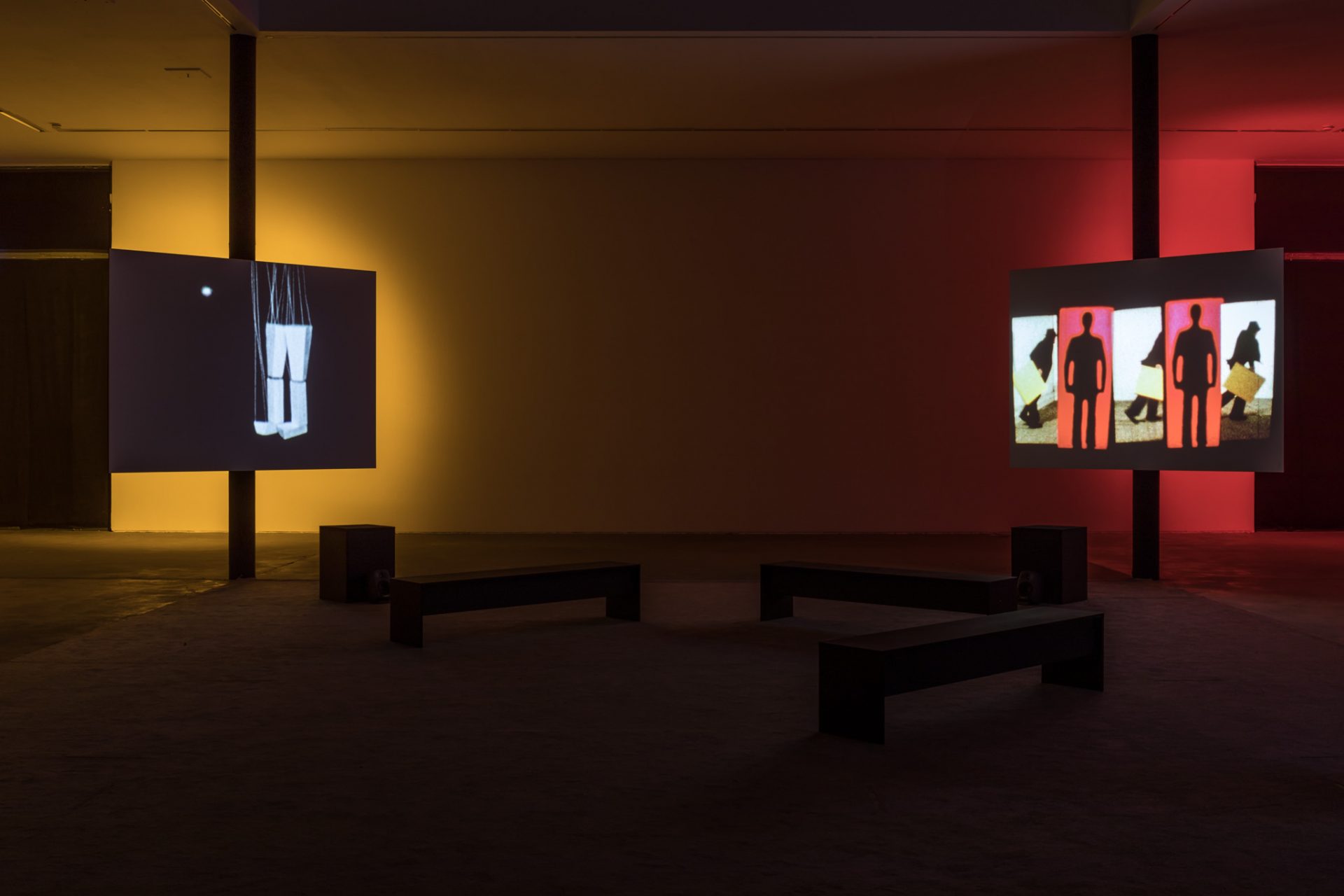
Excerpt
________________
Out of Hand, 1980
‘Out of Hand is a search film, where a small boy returns to a house that is being evacuated, to search for something that he left behind. His method is to follow hidden clues in this house and to respond to the hidden aids in his memory. Back and forth, between inquisition and logic, he constructs a search with two unknowns – ‘What it is’ and ‘Where it is.’ Each object he chooses has multiple functions, which extend both into the physical space of his search, and into the imaginary world of his perception and memory.’ — EB

_________________
You The Better, 1983
‘You The Better was my first 16 mm film. I was trying at this time to build a larger audience for my work than just the few venues that were in downtown New York for screening, so I moved to 16 mm hoping that I would be able to engage a larger distribution structure.
‘This particular film was created after a long, introverted period in my life when I was beginning to investigate what is behind performance. What is the language of action? How do we learn as children to do things? How is our identity formed through action? I wanted to make something work without using narration or dialogue, and because I was using this theatrical, industrial medium of 16 mm film, I knew that I had to have some kind of hook. When I was making the Super-8 Trilogy that was based on Piaget’s work (my sort of incubation period), I made a film that involved Mike Kelley doing a series of team sports outdoors. I said, “This is it: gaming structure is going to replace narrative for me.”
‘When the film came out it was so off the path of what you expect to see in a theatrical film because of its non-narrative gaming structure. Though it circulated quite a bit, I wasn’t able to show it the way I wanted to show it; I showed it on screens in museums in conjunction with a lot of art shows, but there was a really strong divide—a barrier in fact—between film and visual art in the late ’80s.’ — E.B.
Excerpt
the entirety
_____________
Cinderella, 1986
‘CINDERELLA is a musical treatment of the fairy tale. I have broken apart the story and set it as a mechanical game with a series of repetitions where CINDERELLA is projected back and forth like a ping-pong ball between the hearth and the castle. She never succeeds in satisfying the requirements of the ‘Cinderella Game’. The film was shot MOS, the dialogue is lip-synched, and along with the out-front score and effects track magnifies the film’s sense of alienation.’ — E.B.
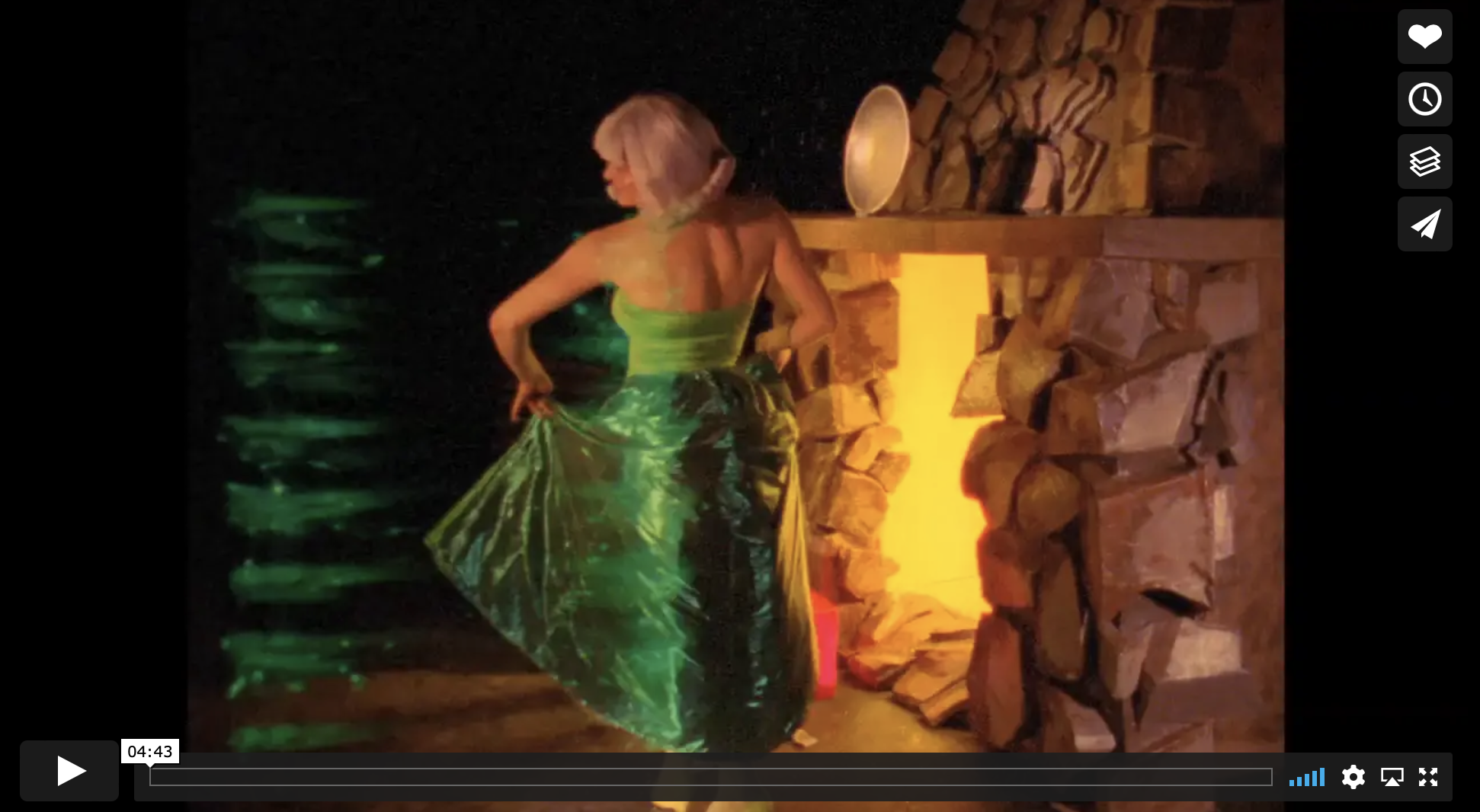
Ericka Beckman on Cinderella
_____________
w/ Mike Kelley Blind Country, 1989
‘This collaborative video project is based on a short story by H.G. Wells called “The Country of the Blind”—about a man who travels to a country of blind people and attempts to dominate their sensual, feminine culture with his male, sight-derived power. Following this theme, Blind Country begins with animated fruit dancing over Mike Kelley’s body and the admonition of “Northerners” to “refill the quickly emptying sack.” In the male-dominated land of the North, candy-spurting pinatas stand as phallic symbols. Presumably castrated, and stripped of his authority, Kelley acts the buffoon as he is led through the murky land of the South, a “female,” earthy, “realm of the senses” opposing the phallocentric world of the North.’ — vdb
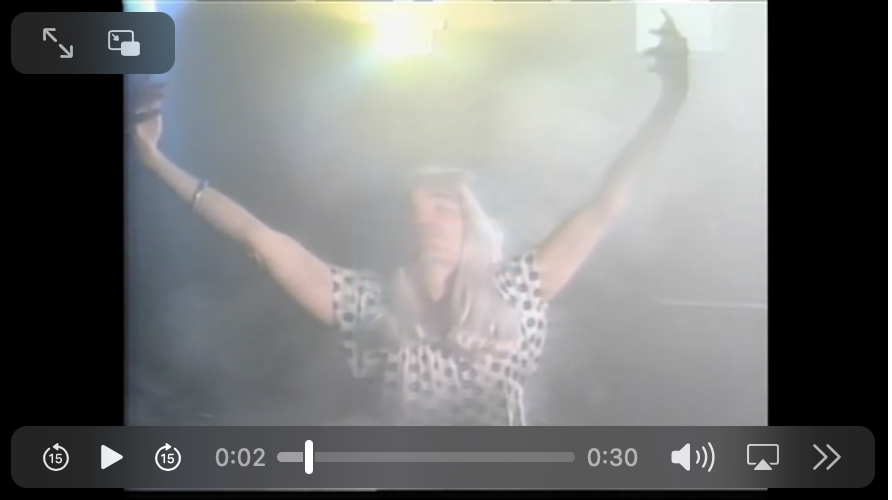
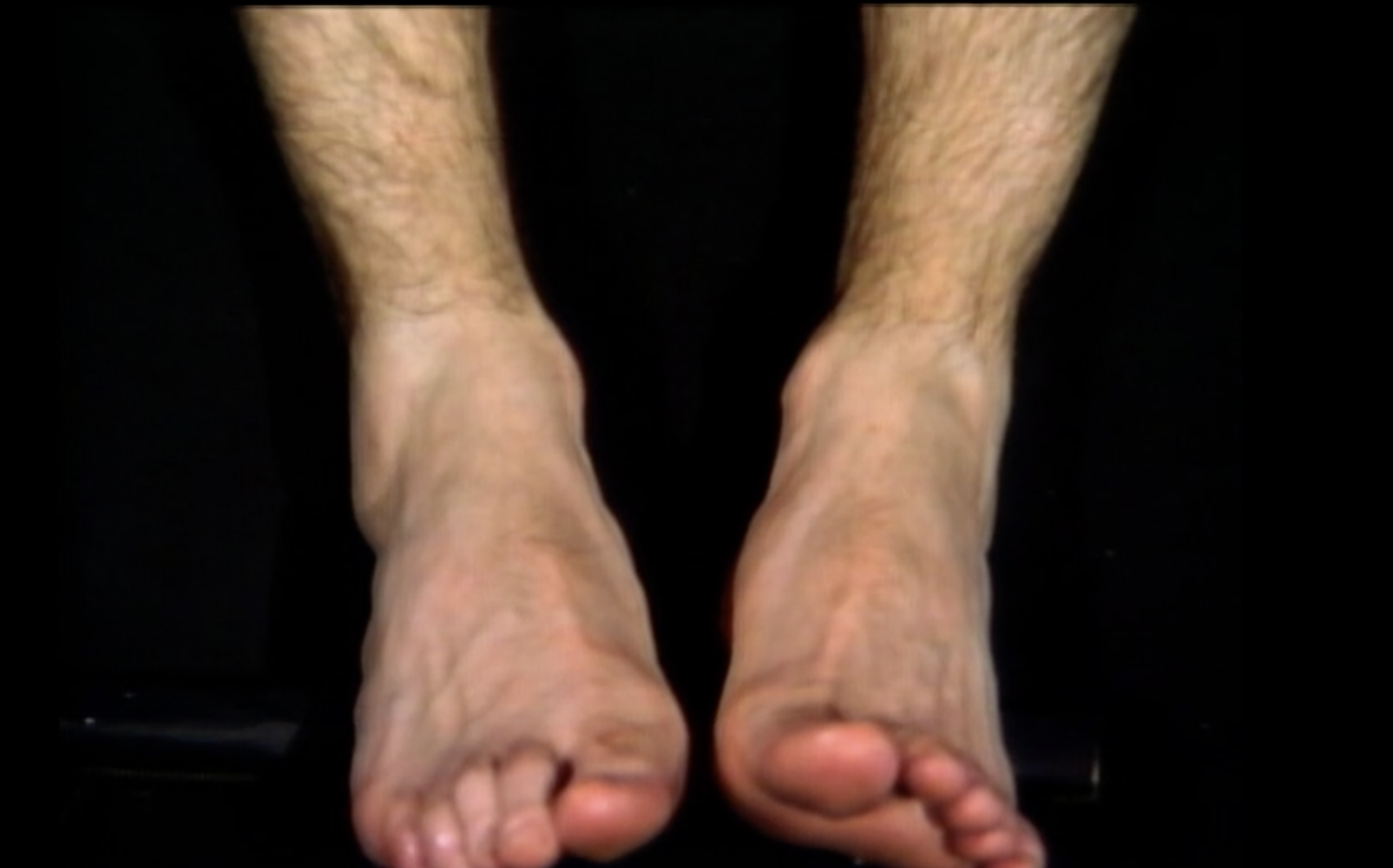
__________
Hiatus, 1999
‘Madi plays an interactive on-line computer game in the privacy of her apartment. Wearing a computer corset that stores her programs in a “Garden Interface”, she propels her go-go cowgirl construct WANDA through the game world, encountering an assortment of logged-on players and game identities who trick and confuse her. An aggressive male character WANG logs on, and inserts his cold architecture into her coordinates, draining the power in her corset. His expanding architecture threatens to overtake her Garden Reservoir. To confront this powerful take-over artist, she must rely on her organic memory and is forced to establish some psychological boundaries to protect her identity and preserve her freedom.’ — vdb
Excerpt
______________
Switch Center, 2002
‘SWITCH CENTER is a tribute to the futuristic architecture of the Soviet post war period, and a reaction to seeing it transitioned to shopping malls or global corporate office structures. I was invited by Balazs Bela Studio in Budapest to produce a short experimental film in Hungary. I was the first American artist to be invited by this famous film collective after the fall of Soviet power. The collaboration took place in August 2000, culminating in SWITCH CENTER, a ten minute experimental documentary shot in many defunct Danube Water Works locations on the outskirts of Budapest. The architecture of a 1960’s water purification plant, left intact for 25 years, inspired me to recreate the factory in sight and sound, and to juxtapose that with the present. While I was meditating on the animation of 3-story water tank, a Pokemon commercial was being filmed down the corridor.’ — The Film-makers Cooperative

___________
Frame Up, 2005
‘The sound for the work came from actual recording on the location, plus many found sounds from department store recordings, where I recorded toys and games and of course an actual pinball machine. Editing is where the chance or “play” aspect was featured. Since I had multiple cameras covering the same day’s labor, I assigned cameras and shots to each screen. Then I linked game sounds to all the shots I chose to work with. At this point there was no linear structure just a “bin” of shots and their sounds. Then I turned “off” the video monitor and cut a soundtrack from the found sounds. I gave myself one rule: I would start in unison and then build a separate soundscape for each screen. This allowed me to let go of building a competitive relationship between the two screens. Then I opened the video monitor and took a look at my action cuts. This first edit governed everything that came after – the graphics, the length of the shots. My second rule was to heavily rework the first edit. It was a joy for me to take a very important architectural site and turn it into a simple pinball game, and to make the workers of a remarkable structure turn into handlers for the game. And why not? Isn’t that a joy itself to turn work into play?’ — E.B.

________________
Tension Building, 2018
‘Since 2002 I have been making films that re-visualizing architecture as a machine. I turn various architectural sites into motion machines, by animating the space with adjustments in lens framing, exposure variations and camera movement. The design of the space dictates the animation design. My current film ‘Tension Building’ is composed of 1930’s concrete stadiums built in the US and in Europe and a model replica of them.’ — E.B.

_______________
Reach Capacity, 2020
‘The origin of ‘Reach Capacity’ is The Landlord’s Game, a board game conceived in the early 20th century by Lizzie Magie. The aim of this game was to demonstrate how different economic systems operate, including their effects. First you would play according to capitalist rules. This version we all know, as the Monopoly board game was directly derived from it. As soon as one of the players acquired a monopoly the game would be over, but in in Magie’s version the the board was reversed and you would play on based on new, socialist rules. This would end the monopoly, causing wealth to be distributed fairly. ‘Reach Capacity’ borrows this structure, including a frantic first part in which project developers make one towering building after another go up – the towers being symbolized by simple surfaces in neon colours. But in the second part the rules of the game change and thus the action changes. The film turns more poetic and Beckman directly addresses the viewer though sung texts. ’Reach Capacity’ offers food for thought on the value of labour, as well as on what value actually is.’ — mleuven
Excerpt
*
p.s. Hey. ** Dominik, Hi!!! Merry, merry after Xmas! I didn’t do anything out of the ordinary on Xmas. Really, not a thing. But I didn’t mind. However, if your generous love had been real, it could have been the best — or, well, the weirdest maybe — Xmas ever! Thank you! Love as a very wealthy man who collects burned Smarties who happened to be walking by your friend’s place when the oven disaster occurred, smelled smoke, recognised the precious smell that emanates from burning Smarties, opened his bank’s wire transfer app on his phone, and knocked on your friend’s door, ready to make a very generous offer, G. ** Billy, And Merry Xmas just a little late to you, Billy! ** h now j, I hope your Xmas was a joyful thing. I’m fine enough, all in all. And you? Well, if the address you have for me has the postal code 75008, it’s my current address. Mysterious. Hugs to you! ** David Ehrenstein, What an excellent favorite Xmas song! ** Tosh Berman, Thank you, sir and pal! ** David, Hi, My day was no sweeter than usual, but my days are generally sweet-ish at the very least, so no problem. Nice dinner there, and vegetarian me could even have eaten it unless you left something out. That’s really sweet and tender and sad about the woman and you. A real Xmas. I’ve never known whether Boxing Day was about boxing, the sport, or about putting things inside boxes. ** politekid, Hi! They did. Unfortunately for everyone here, the post they will probably inspire will likely be an Emo Machinima thing, which I feel safe in imagining will please exactly an audience of two aka you and me, but hey. Poetry has this odd intimidation problem, and I get it while not completely understanding why, given how skinny and svelte poems tend to be/look. No arguments! Congrats! Dutch Skype! I’m a fan of the Dutch, so that sounds great too. I know the name Hilary Mantel, but I’ve never read her. Let me know if you think I should. My day was nothing to remember. Nice walk, empty streets, Belgian waffle at the fete foraine, semi-dreamy, a few texted greetings with far flung friends. And now … the future! ** _Black_Acrylic, Cool. So it’s Boxing Day, as in the sport, and not Boxing Day, as in the opposite of unboxing? I always hoped it was the latter. I’m sorry to hear that about the Leeds team. I don’t know how PSG is doing. I suppose if they weren’t doing well, I would hear about it. ** T, Hi. Oh, thanks, I always aim to spoil y’all. That’s funny: the only Xmas present that I know I’m getting is some organic socks — I have to wear organic clothes, long story — from a friend of mine in LA. What were the odds? My Xmas was nothing. The walk was nice, but, no, no revelations occurred therefrom. Mm, pre-NY, I need to sort things out with the film producer, ugh. I need to write something. I’d like to go sit in a movie theater and watch something, maybe the ‘Matrix’ film. Nothing too exciting. Hope you get back here as soon as hoped. I think new restrictions are coming down today, but I think it’ll mostly be vis-vis the vax pass. Wow, very nice wish for my today. I’ll keep my eyes peeled. I hope yours involves you happily discovering the unexpectedly luxurious effect of your new socks. ** Steve Erickson, Hi. My Xmas was so uneventful that I have all but forgotten what happened. Yum, vegan Mexican. Your Xmas so wins. I like the idea that ’70s muzak could become more grating than it inherently is. ** Kage, Kage! Nice moniker there. My Xmas was only sublime if nothingness constitutes the sublime, which certain philosophers would probably posit. So it possibly was. Aw, thank you, you’re so kind. I suspect I’m blushing, but there’s no mirror handy so I can’t say for sure. And I wish you an ultra-extremely poetic 2022! ** Okay. I have this feeling that very few of you readers are familiar with Ericka Beckman’s work, and that is why I reasoned a post starring her and her things would be in order. See you tomorrow.

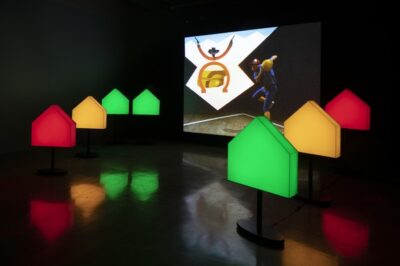
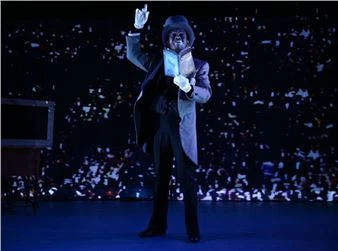

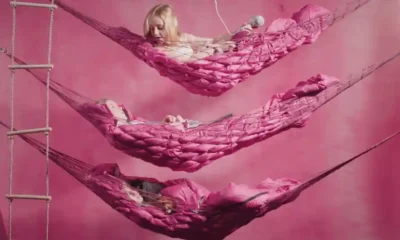


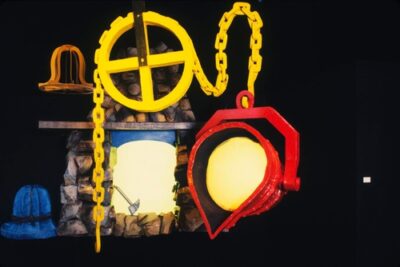

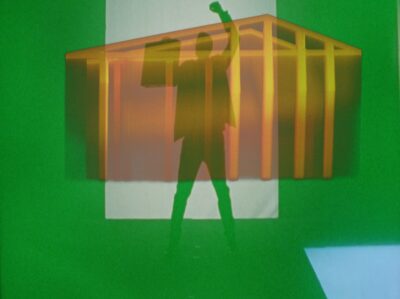
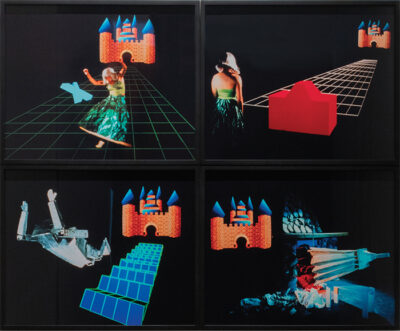
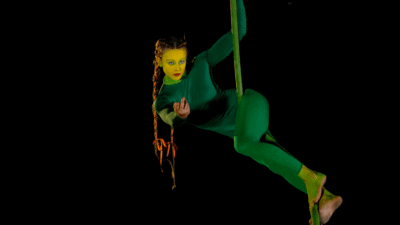

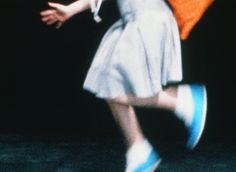
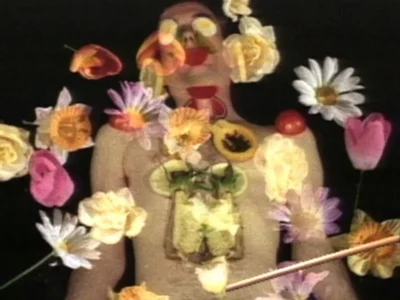

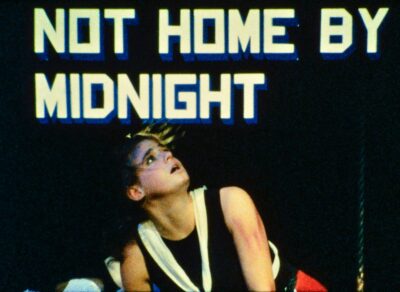

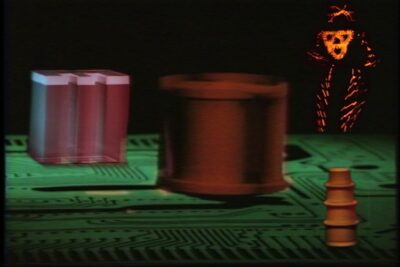
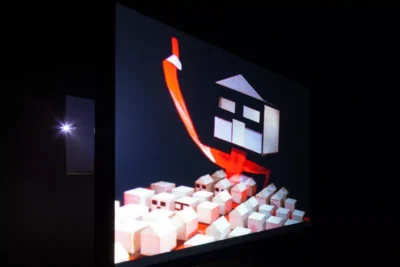
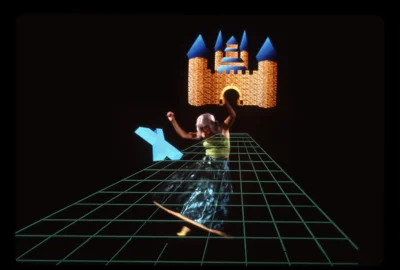
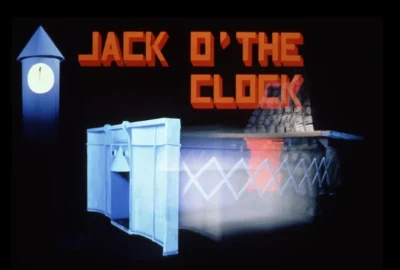
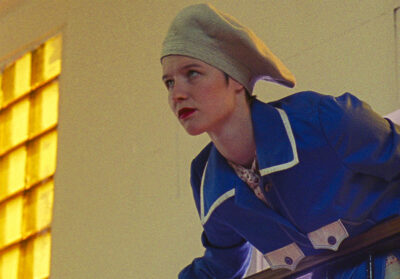
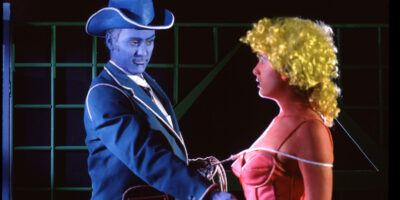
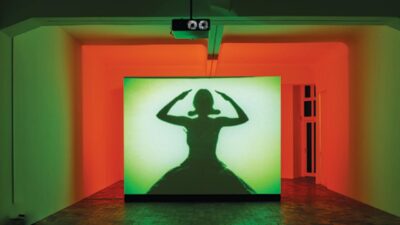

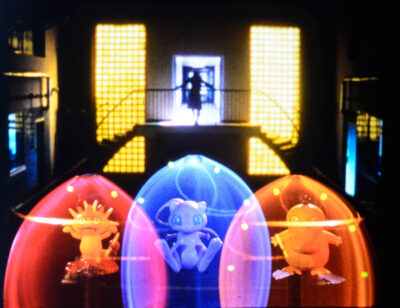
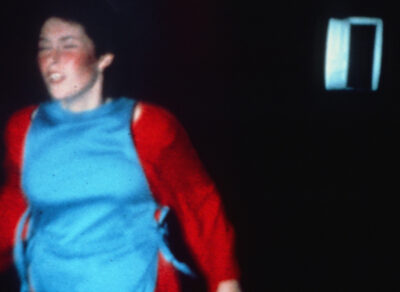
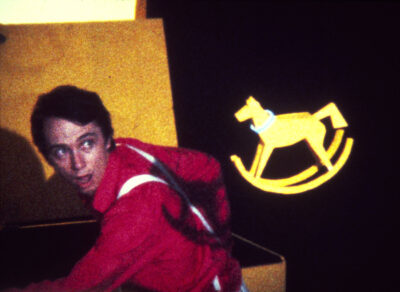

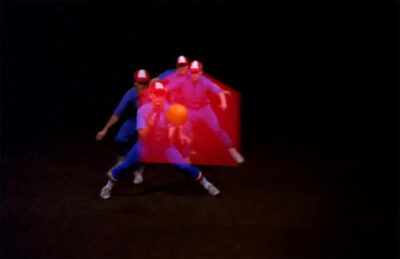

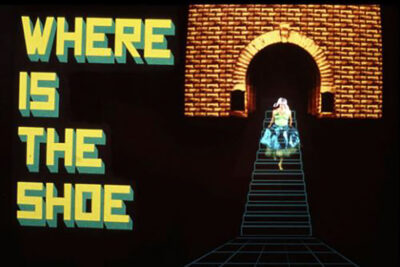

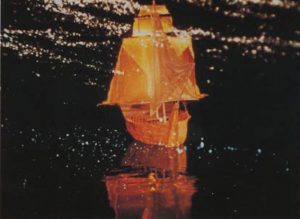


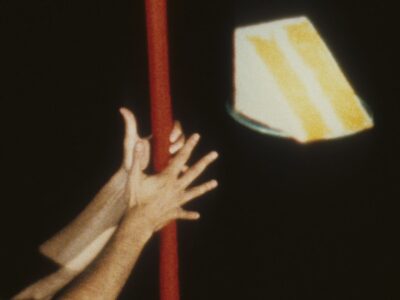
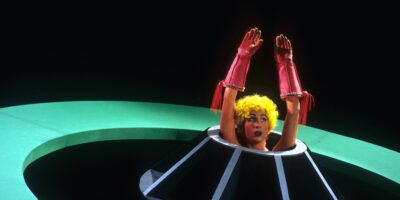
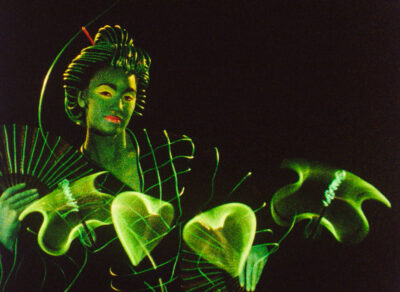
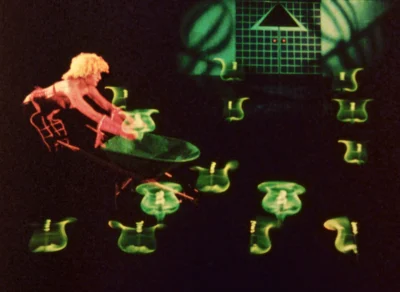

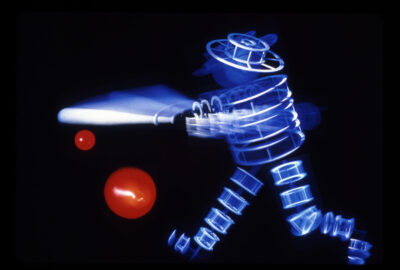









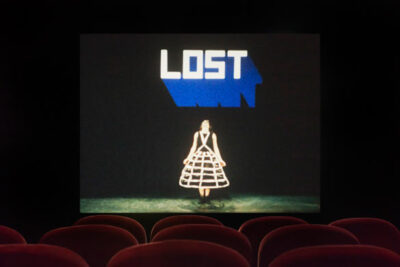
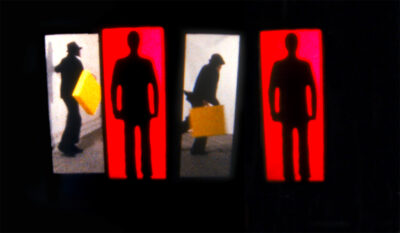
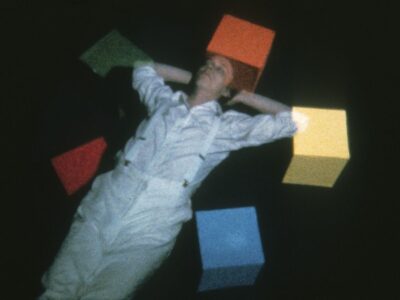
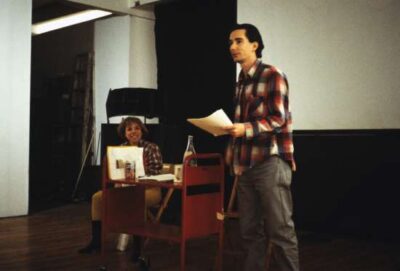


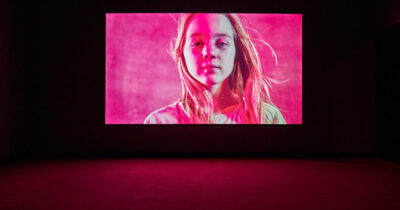


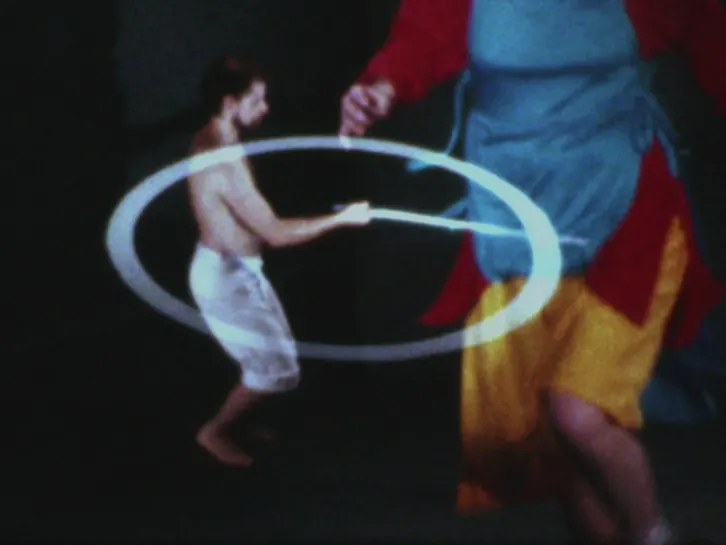




 Now available in North America
Now available in North America 
Hi!!
Thank you!!
How much time did it take to collect all those super weird and creepy “stocking stuffers”?
Hahaha, I would’ve liked to see my friend’s face when she opened the door and found herself face to face with your love. I’m pretty sure she would’ve been happy to sell every single burned Smarties she scraped out of her oven. Middle-aged love feeling absolutely certain that Jared Leto sold his soul to the Devil for eternal youth because he just turned 50 and based on what love sees in the mirror every morning, he shouldn’t look the way he does, Od.
You would have liked the dinner Dennis… yes it was vegetarian… I have been vegetarian since I was 17… although I’m all for cruelty to animals………. I jest….
Is it narcissistic to like being told over and over that you have a nice face and smile by someone who is suffering from alztheimer’s? It was actually very reassuring…. comforting…. (especially as I currently look like shit) when she said “I like you” that really got to me…. as I knew it was from the heart… honest…. whatever…
This post has overtones of Laurie Anderson of whom I am huge fan… Ericka Beckman looks pretty interesting to me… thanks for the introduction…
Glad you had a sweet Xmas day…. presumably no one bought you a loaded gun… ??? Any interesting gifts?
Anyway I’m off to have another family meal…
Goodbye…
“Oh and erm…. Dennis Cooper…. I like you”
××
Dennis, Yes, the links! You probably go a lot of coal Saturday for not including links to the glorious stocking stuffers!
We did the Chinese food and it was pretty righteous. Even Kayla got in on it and got some orange chicken (and tore up the shrimp toast too). (She usually doesn’t eat Chinese. She likes Japanese much better.)
Xmas was good. My haul: Two t-shirts (Mandalorian and KISS), two Paul Atreides (read: Timothee Chalamet) Funko Pops, an air fryer, three pairs of much-needed gym shorts, and a $50 Amazon gift card. I was happy with all that.
Oh! So Kayla and I went with my friends to the Garden in Lights show down in St. Mary’s County, MD last night. Got to hang with two of my favorite kiddos. But here’s the funny part: a friend of mine got me a t-shirt that says, “It’s a COOPER thing, you wouldn’t understand.” She found it online somehow and I think it’s pretty ingenious. She knows how much I love your work and how a lot of people still don’t get/understand it. I’m like, this is pretty perfect.
David’s 21st birthday is on Thursday, so we’ll be doing that. And then we’re, my friends and I, probably doing another bonfire thing at my one friend’s on New Year’s Eve. I mean, I ain’t doing nothing else.
I’m getting Japanese food after work today with a friend I haven’t seen in a really long time. That should be good.
Hope your weekend was swell.
I’d seen a pic of Blind Country in a Mike Kelley art book many years ago, but I am learning about Ericka Beckman’s work only now. Great to see the full film and to learn more about her practice today, so thank you!
Slowly, but in a steady manner, watching The Beatles’ “Get Back” Peter Jackson film. I had no interest in seeing this film, until a friend gave me her code to watch it. Now, I think it’s an excellent piece of work. I’m not even sure if one has to be a fan of the Fab Four (I’m an old fan, but not an obsessive fan) because in actuality, it’s a band/group working together and how that comes apart or together. They are surrounded by interesting characters, and of course, the dynamic between McCartney and the others is fascinating to watch as well. There are things that I found surprising. One is the passive personality of John, and the other is George’s insecurity of his role in the band, which itself is not surprising, but his weird admiration for Eric Clapton that comes up here and there. And then there is the knowledge of his marriage breakup of either giving his wife to Eric, or Eric taking his wife is an additional poison in the overall narrative. Eric gets a the wife, and also his role in the Beatles. It’s very twisted! So, Paul is the dad, George & Ringo are the children, and John, oddly enough, is the mom. Ok, now back to reading today’s blog!
Hi exciting DC! I really hope you meant your comment for I find the possibility of me making you blush extremely thrilling! In fact, the thought of this possibility has set my week in the right direction… Oh, your feeling is probably right – personally, I haven’t heard of Ericka Beckman’s work before; I shall investigate, but ngl, I’m just counting the days for your end-of-month (year!!!!) Boy Post. Are you in the process of making it? If so, will it be up on Friday the 31st? <3
Here’s my new song “o m i n o u s d r o n e 7”: https://callinamagician.bandcamp.com/track/o-m-i-n-o-u-s-d-r-o-n-e-7
Beckman’s a fascinating filmmaker – the Super-8 trilogy and YOU, THE BETTER are high points. I didn’t make the connection to Matthew Barney till I read Amy Taubin’s piece, but it seems so obvious now.
I saw the Wachowskis’ SPEED RACER last night and thought it was great. It really embraces the artificiality of CGI, with layer upon layer of green-screen. It’s as exciting an action film as THE MATRIX and deals more subtly with the director’s career(s) requiring them to recycle IP for Warner Bros. than THE MATRIX RESURRECTIONS (which is extremely messy but worth a look.)
Ericka Beckman post! Thank you, Dennis. I love her work. Wanted to review her MIT show a few years ago, but I got taken by something else. I’m gonna read this gift thoroughly right now.
Yes, I have that address with 75008 in it. Will send you something soon. Sorry, won’t be arriving before your 2022 birthday. Happy 2022!! I’m moving soon (in a week) to a different room…next to a park…so I’m looking forward to taking a daily long walk there in 2022.
Just saw “You the Better”. What an odd yet absorbing piece. I’ve been known to watch my share of basketball.
Hope you had a nice holiday weekend, Dennis. The weather was shit (by SF standards), so it was a lot of staying inside, cooking, movies and books.
This release by a Berlin friend just came in the mail; really enjoying it:
https://lizallbee.bandcamp.com
Bill